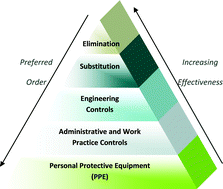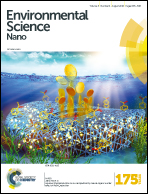Evaluation of existing control measures in reducing health and safety risks of engineered nanomaterials
Abstract
While the risk management of engineered nanomaterials (ENMs) receives significant attention, there is still a limited understanding of how to select optimal risk management measures (RMMs) for controlling and mitigating the risks associated with exposure to ENMs. Clearly, there exists a need to expand current risk management practices to ensure safe production, handling and use of ENMs. Moreover, the performance of the existing RMMs should be re-evaluated for ENMs since control options that are proven to be effective for preventing or limiting risks associated with traditional particles might give unsatisfactory results in the case of nano-scale particles. This paper has brought together the evidence on the adequacy of traditional controls to minimize potential health and environmental risks resulting from exposure to ENMs. The aim here is to advance our understanding of the risk management approaches relevant for ENMs, and ultimately to support the selection of the most suitable RMMs when handling ENMs. To that end, evaluative evidence collected from the review of relevant literature and survey of nanotechnology institutions are combined and summarised to understand the level of protection offered by each control measure, as well as the relative costs of their implementation. The findings suggest that most relevant risk control options are based on isolating people from hazard through engineering measures (e.g. ventilation and chemical fume hoods) or personal protective equipment (PPE), rather than eliminating hazard at source (e.g. substitution). Although control measures related to the modification of ENMs have high efficiency in the occupational risk control hierarchy, they are not widely employed since there is currently a high degree of uncertainty regarding the impact of manipulating nano-characteristics on the performance of final product. Lastly, despite its low cost, PPE is the least effective category in the occupational risk control hierarchy and should not be used on its own when significant risk reduction is required. Clearly, further quantitative data is needed to fully assess the feasibility and cost-effectiveness of risk control options to prevent risks from exposure to ENMs. When there is little information on the efficiency of control measures specific to ENMs, the default efficiencies can be used for initial assessment purposes although it should not be considered exhaustive.

- This article is part of the themed collection: Sustainable Nanotechnology Organization 2014

 Please wait while we load your content...
Please wait while we load your content...